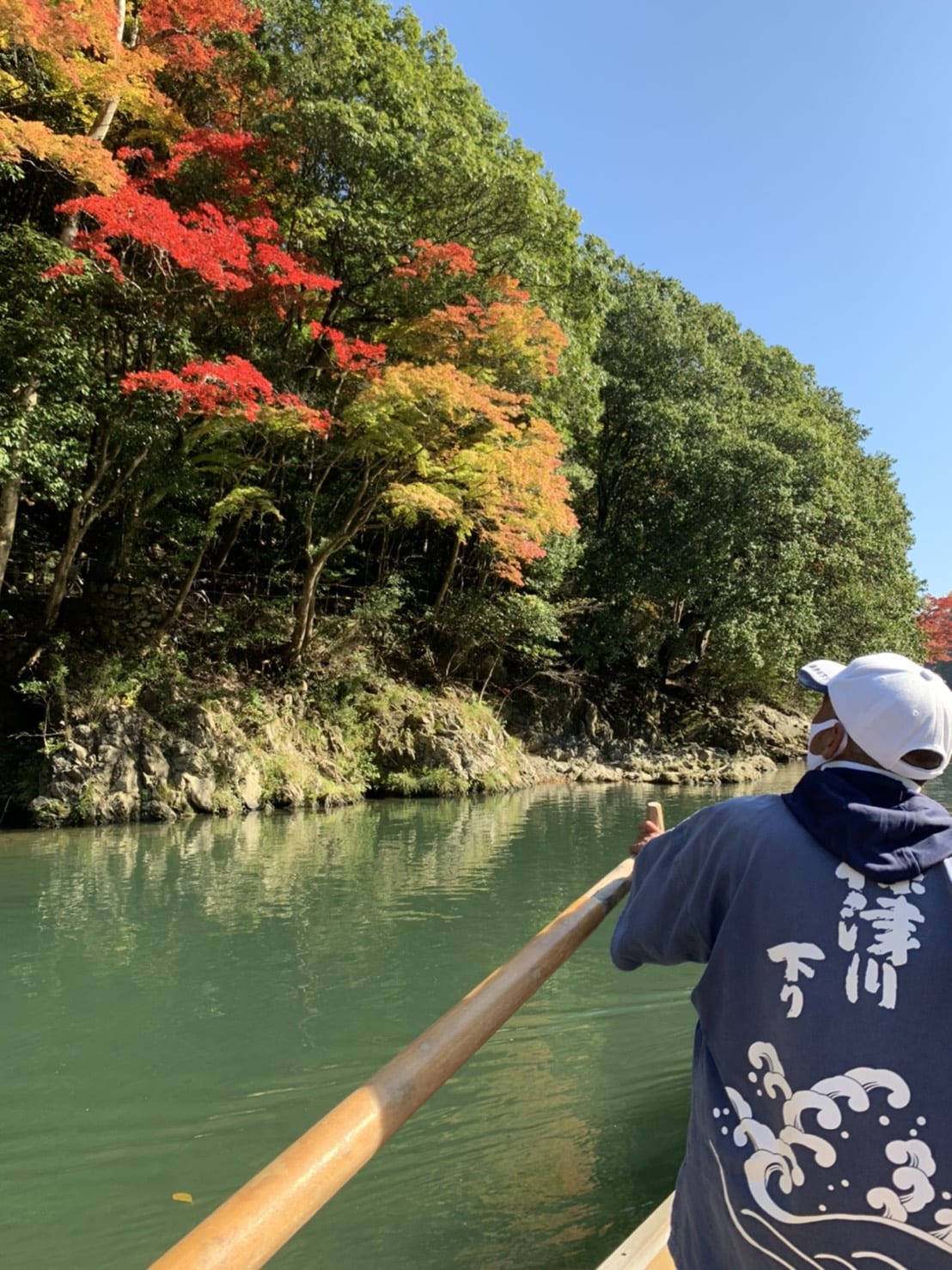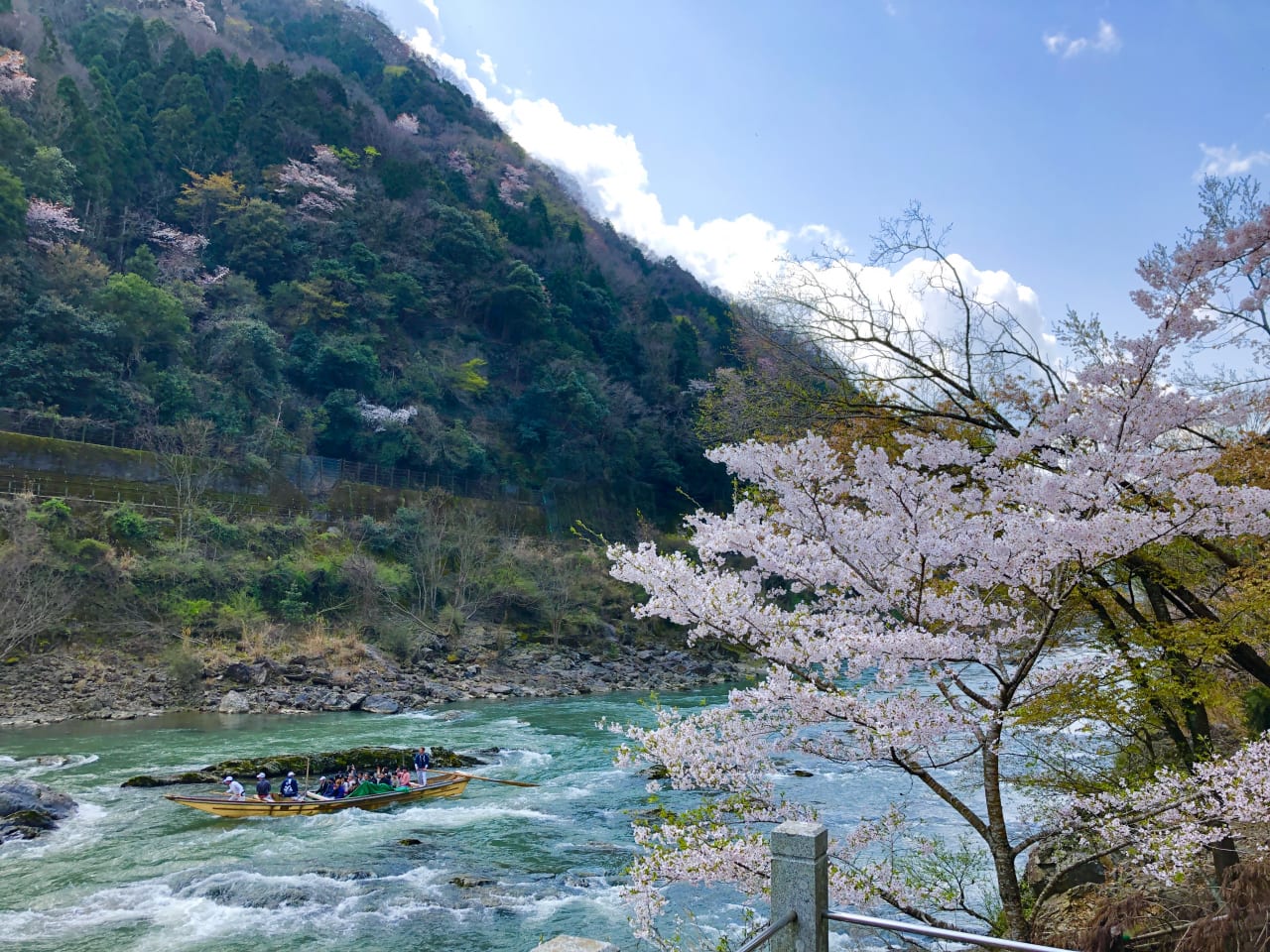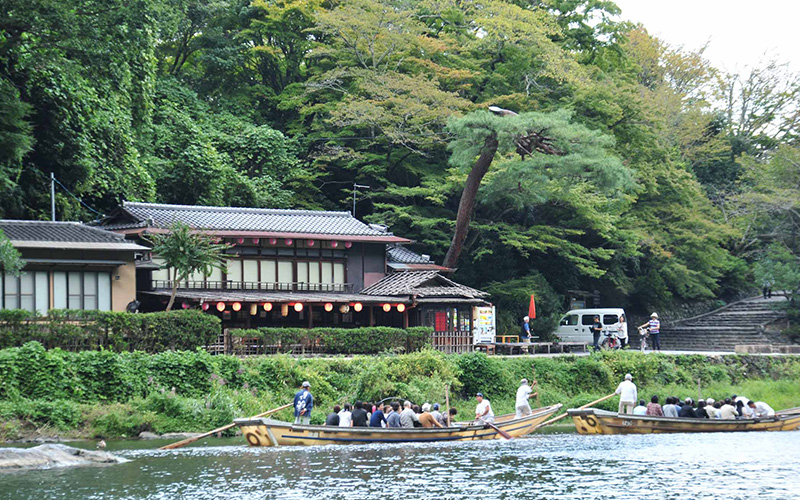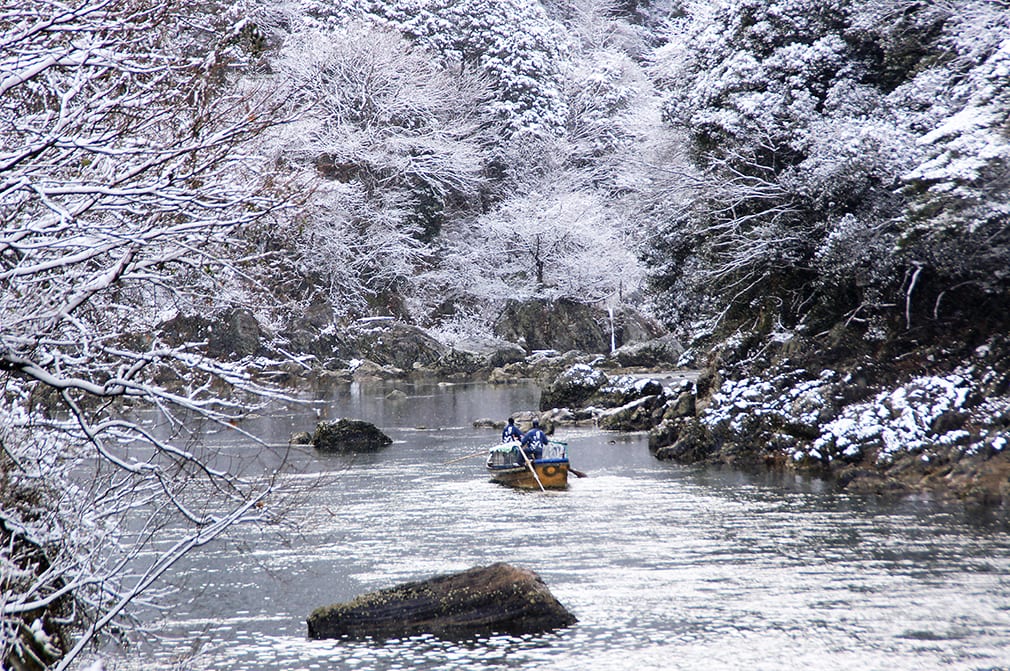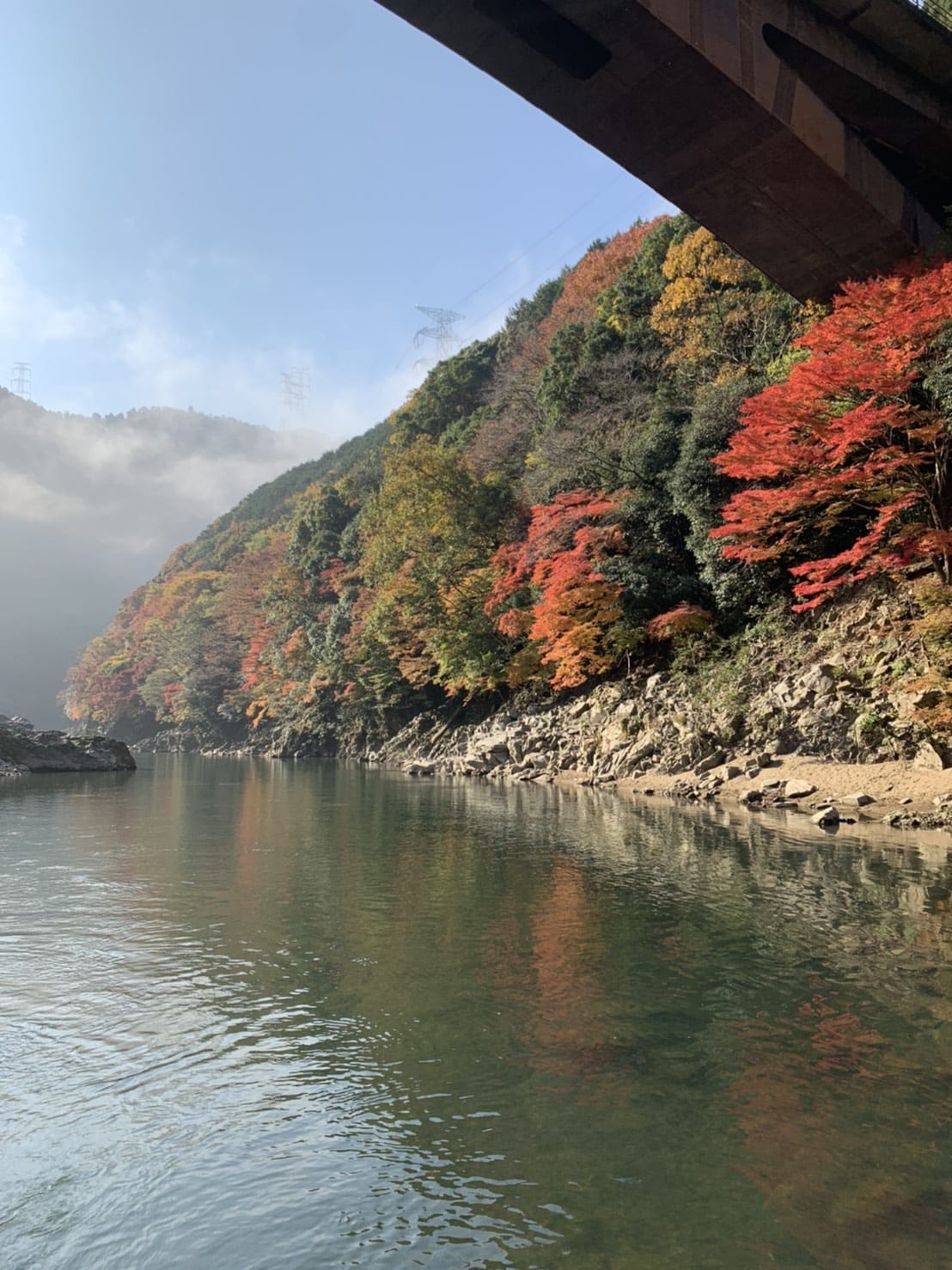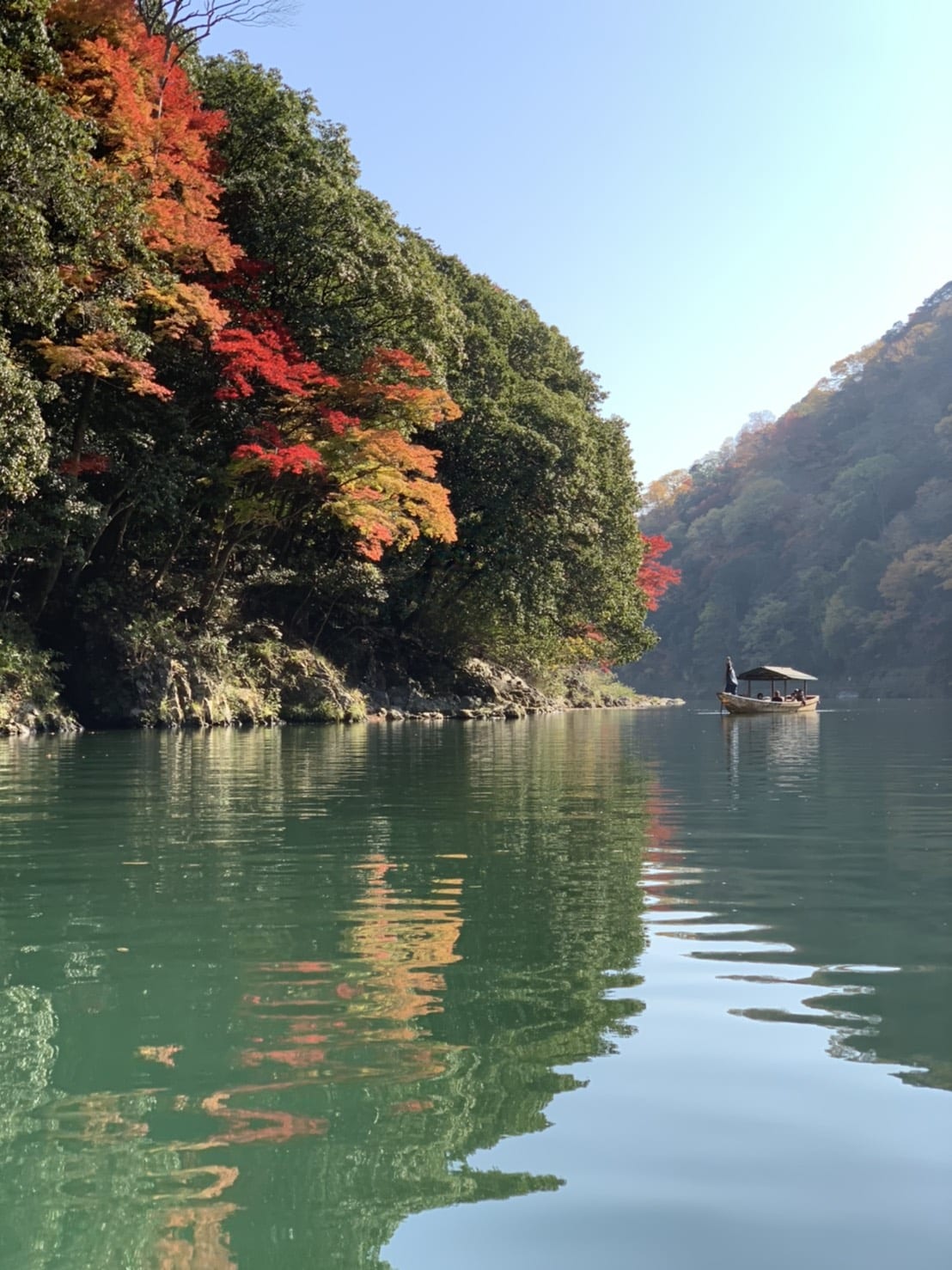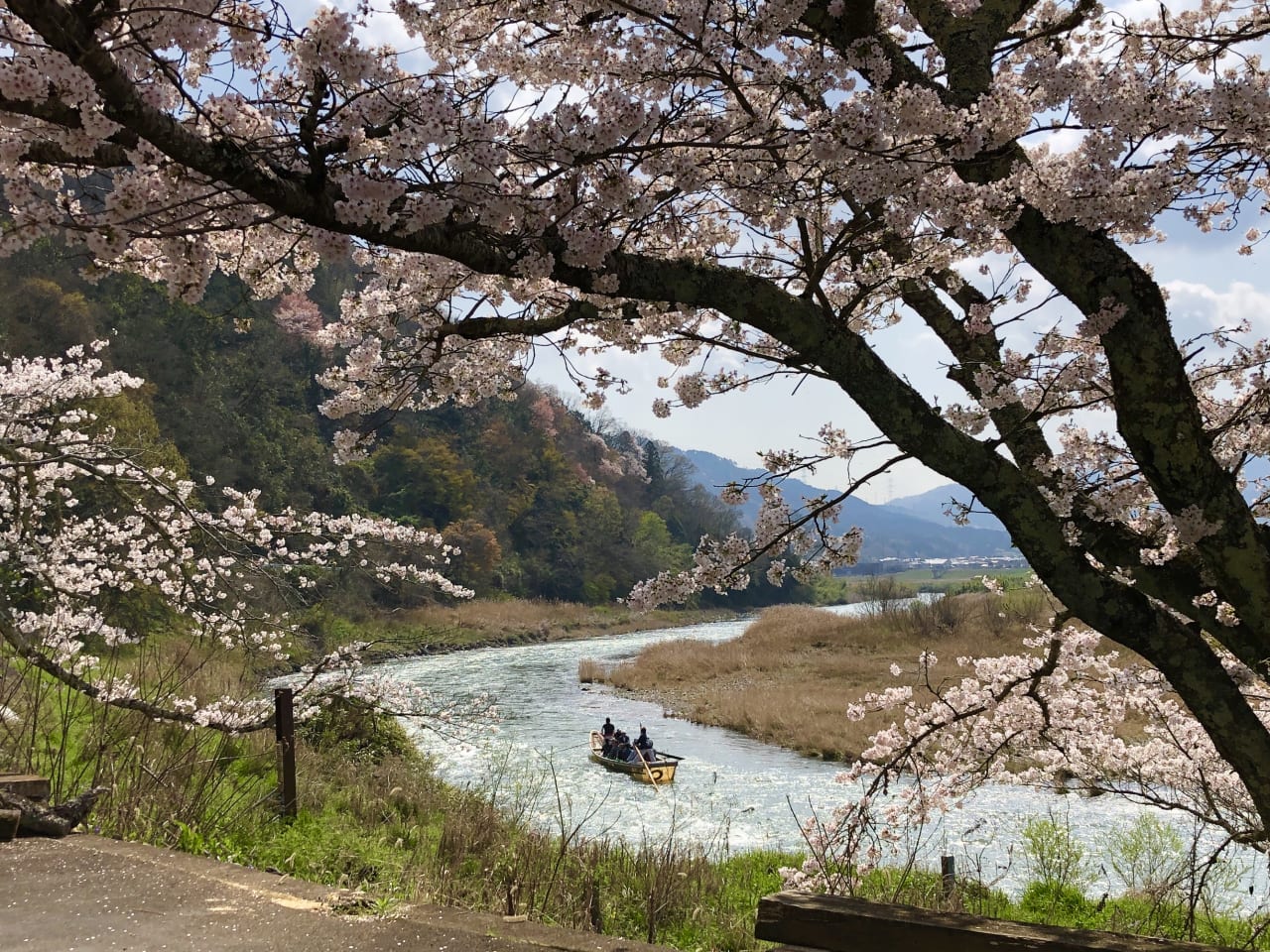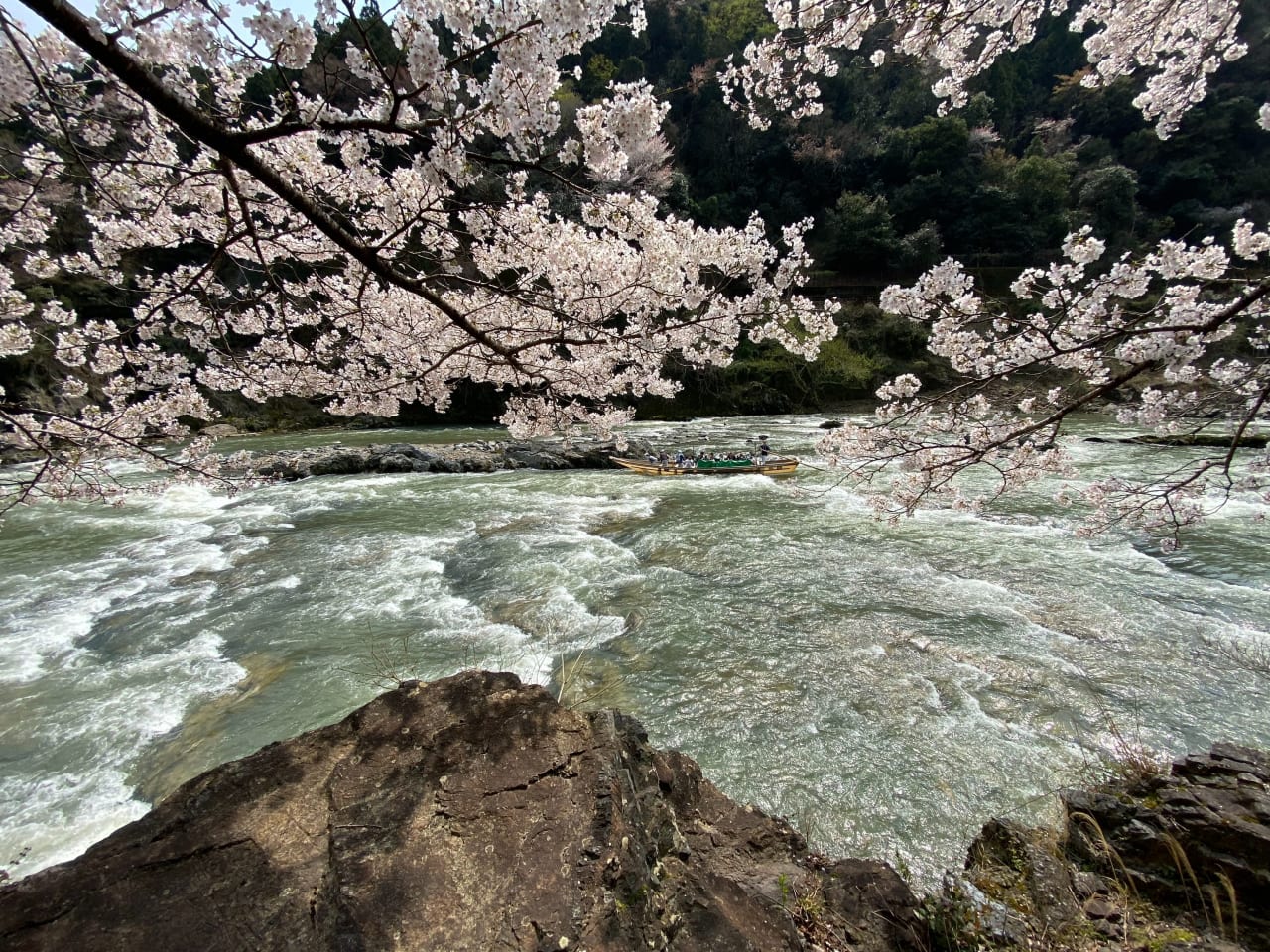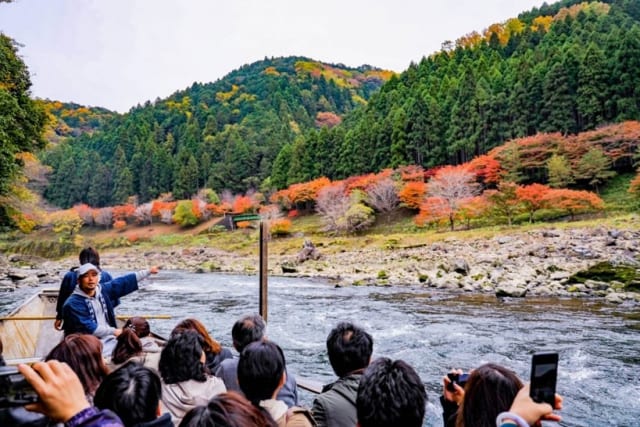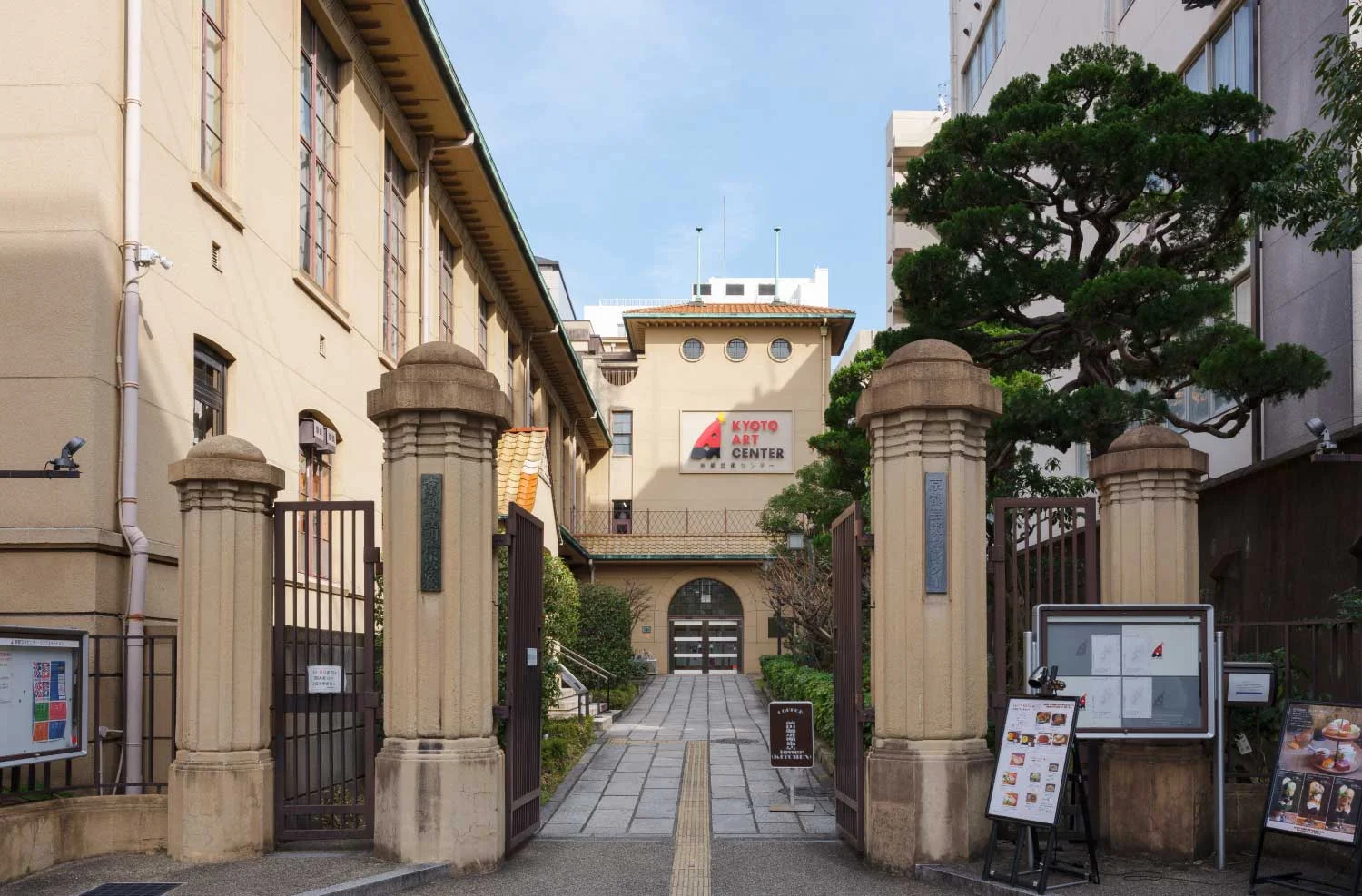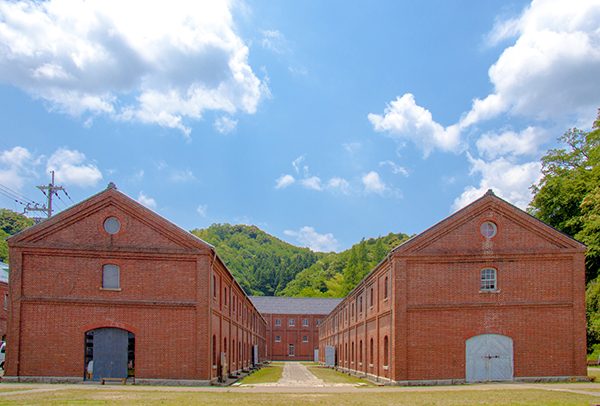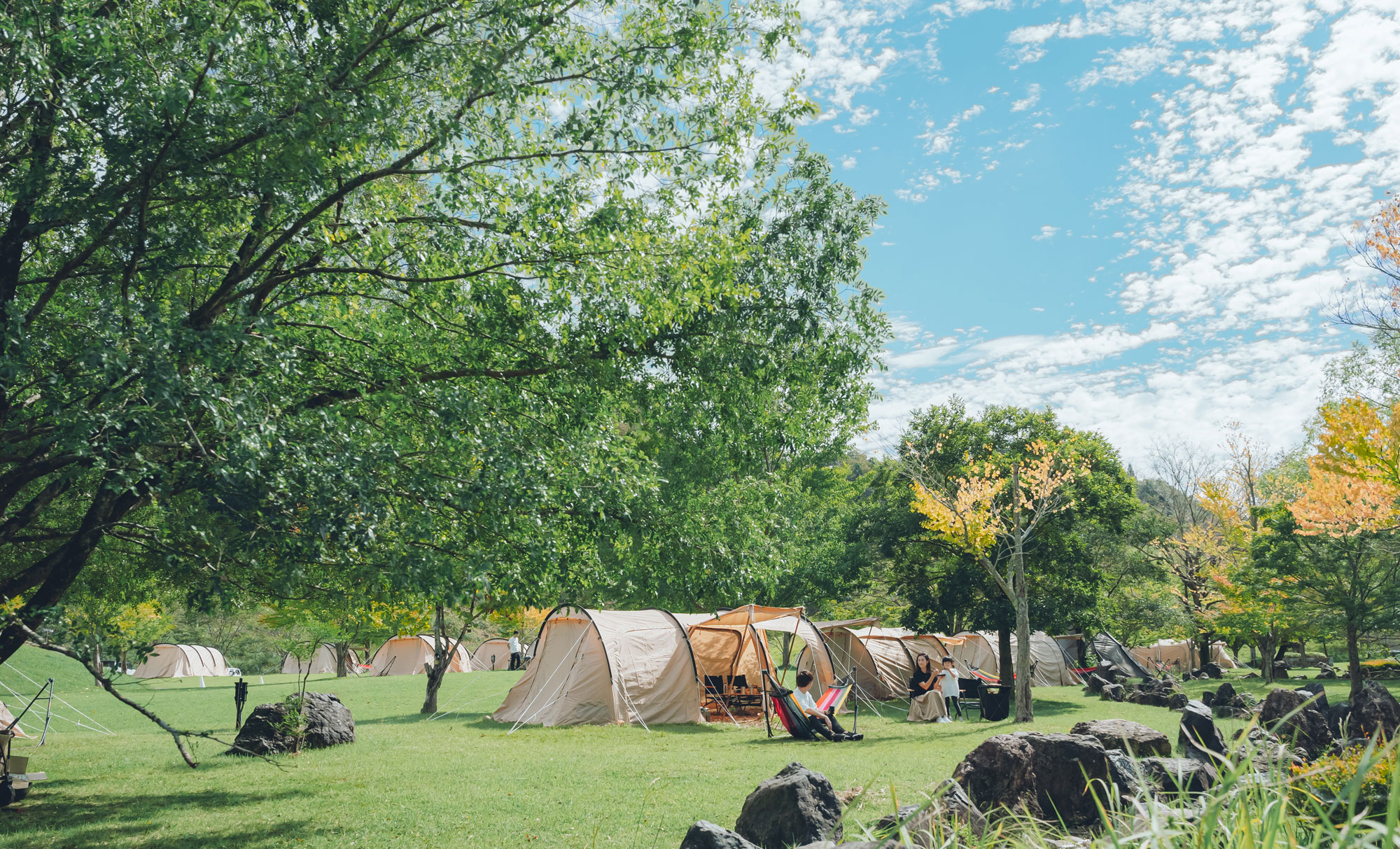

Things to do in Kyoto: Hozugawa River Rafting
What is “Hozugawa Kudari”?
Hozu River
The river originates from the Tanba Highlands in central Kyoto Prefecture, travels around the mountains to Sonobe and Kameoka City, flows through mountain valleys for 16 km, reaches Arashiyama, a national scenic spot, and joins the Kamo River to form the Yodo River. The stretch of this river from Kameoka to Saga Arashiyama (Ukyo Ward, Kyoto City) is called the Hozu River, which is famous for its beautiful gorge and boat rides.
この投稿をInstagramで見る
Canyon landscape
On both banks of the river are mountains, and Kyoto’s Mt. Atago (dedicated to the god of fire) rises from the top of the mountain, and as the river curves from side to side through valleys, it appears and disappears in front of the boat.
Nature shows a variety of faces throughout the four seasons: rocky mountains, pine mountains, wooded mountains, cherry blossoms, and autumn leaves.The flow is extremely varied, with rapids and deep basins.The riverbed is dotted with large rocks and strangely shaped boulders that seem to block the flow, and each one has an indescribable charm and has a story to tell. The rocks are also littered with traces of the boatman’s poles and the ropes used to pull up the return boat, which tell the story of the history of boating.
Hozugawa River rafting
The term “Kawakakudari” originated from the idea of using the water of the Hozu River to transport goods downstream to Kyoto and Osaka. This is so-called water transportation, and its history goes back to before the capital was built in Kyoto, when the capital was in Nagaokakyo City.After that, it was carried out at Tenryuji Temple in Saga, Kyoto, Rinsenji Temple, Osaka Castle, and Fushimi Castle. Using the water transport of the Hozu River, wood was transported by raft from Tanba, far upstream, and the materials were prepared.
Not only timber, but also rice, wheat, firewood, and charcoal began to be transported by Takasebune after the waterway was opened in 1986 by Ryoi Kadokura, a wealthy merchant from Kyoto who was known as a river daimyo.
Tamba’s abundant and high-quality wood, grain, and firewood were transported to Kyoto by water until after the war, around 1945, but with the opening of the San’in Line (1896) and the development of truck transportation after the war, The use of water transport by rafts and barges gradually disappeared.
この投稿をInstagramで見る
However, the natural beauty of the Hozugawa Gorge is amazing throughout the four seasons, and the varied landscape, including huge rocks, the surrounding mountains, the splashing water, and the mysterious mirror-like banks, is truly a sight that attracts people. It catches my eye and doesn’t let go. Therefore, from around 1880, they began to be used as pleasure boats to carry tourists down the river. Now that rafts and barges have disappeared, this type of sightseeing has become exclusively about boat rides.
The Hozu River Boat Ride, which stretches 16km from Kameoka to Saga, is today known as a world-famous boat ride, and around 300,000 tourists visit throughout the year to enjoy the natural beauty and thrills of each season.
この投稿をInstagramで見る
History of Ryoi Kadokura and Hozugawa
Much of the reason why boating down the Hozugawa River became as popular as it is today is due to the excavation of the Hozugawa River by Ryoi Kadokura, a wealthy Kyoto merchant. When Ryoi was 51 years old, he decided to excavate the Hozugawa River to connect Tamba and Kyoto, and use water transport to transport the rich supplies of Tamba to Kyoto. Work began on creating a waterway by excavating the gorge, which is surrounded by many difficult spots, is filled with huge boulders, and has rapids. After making many sacrifices and investing a huge amount of money, Ryoi established water transportation for the Hozugawa River.
He not only opened water transport on the Hozu River, but also opened the Takase River in Kyoto and connected Kyoto and Osaka with a canal, and also opened water transport on the Tenryu River and Fuji River at the behest of the shogunate.
When the boat enters Saga Arashiyama near the end of the Hozugawa River Cruise, Daihikaku (Senkoji Temple) can be seen on the mountainside to the right. This temple was built by Ryoi to mourn the souls of the victims of excavation construction. There is also a monument to Ryōi.
この投稿をInstagramで見る
Literature and Hozugawa
In the 40th year of the 1900s, the great literary figure Natsume Soseki published his work “Gubijinso”, which states, “The Kyoto train that sends happy people to flowers returns from Saga to Nijo. The two of them bought tickets to Tanba and got off at Kameoka.The water that they had to descend from this station was still flowing slowly, and the banks were open. Then, the clay calligraphy that picks the child of the village grows, and the funako pulls the boat to the shore and waits for customers…”, and in a solid handwriting, he wrote about the scenery that appears one after another as the boat goes down, the boatman’s handling of the rod, etc. It is perfectly drawn.
It goes without saying that Hozugawa Kudari became known to many people after this, but from the Taisho era to the early Showa era, it was welcomed by foreign tourists who were taken from Kyoto by two-man rickshaw to the old slope. The story of the many blue-eyed passengers who crossed the river and enjoyed the boat trip is still passed down to this day, and the road leading to the boarding area at Yamamotohama was given the nickname “Ijinkaido”.
The Meiji poet Susuda Kuto sang his maiden collection of poems, Yukuharu”, on the strings of a koto, attached a stone, and sank it into the depths of the Hozu River, dedicating it to the god of water.
In addition, in the Meiji era, it is expressed in many works by Katsugetsu Omachi, and in modern literature, Tsutomu Mizukami’s “Kinkaku Burning”, Utaro Noda’s “Kansai Literature Walk”, and Masuji Ibuse’s “Sasayama Kaidoki”.
この投稿をInstagramで見る
Enjoyed by people around the world
When the Romanian Crown Prince in 1920 and the British Crown Prince visited Japan as state guests in 1922, they took a trip down the river and praised the scenery and thrill of the gorge. In 1929, royal families from other countries who had been invited as state guests, including the British Duke of Grostani and his party, descended on the temple. After the war, we have enjoyed the visit of Her Imperial Highness Princess Alexandra and the delegation of Ambassador Rundle to Japan, and in September 1965, Her Royal Highness Princess Margaret and her Snowdon delegation.
In Japan, members of the Imperial Household, including Hijikata Hozan, Minister of the Imperial Household in 1915, Emperor Showa and Princess Chichibu in 1926, and Princess Hitachi in 1983, also visited the shrine. There is. In addition, many literary figures and celebrities, including the Meiji shogun Heihachiro Togo, have visited one after another to enjoy the beauty of the valley and the thrills, as well as being amazed by the masterful skill of the simple boatmen’s rod handling. In this way, boat rides are popular from all over the world.
Link: https://www.hozugawakudari.jp/
Notes on departure
About Tour Link:https://www.hozugawakudari.jp/tickets/reservation#teiki
・Persons under 80cm in height will not be allowed on board.
・The time required is approximately 2 hours (there may be some delays depending on the amount of water)
・In case of rain, a tent will be set up on the ship and the ship will sail as usual.
・In the event of rainstorms or rising water, the flight will be canceled.
・We may depart at any time as soon as one boat reaches capacity.
・Capacity may change depending on water volume.
・This winter, we will be operating an open boat without the enclosure. Please come dressed warmly.
・There are no restrictions for pregnant women to board the ship, but please board at your own risk.Please note that strollers will be folded and loaded at the back of the ship, but if you have a large number of strollers, please contact us in advance.
